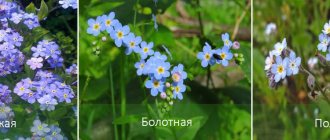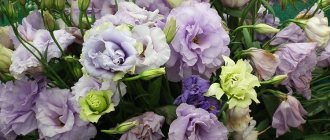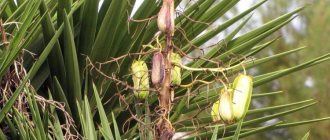- Reports and messages
- Plants
- Orchids
Orchids are amazing plants that can be grown anywhere in the world.
Difficulties can only arise in northern countries. At the moment, the plants are widespread in the tropics. Orchids easily adapt to new conditions. For example, vines, with the help of their tendrils, attach to trees and rise upward. Flowers hang down and fill the air with a pleasant smell. But not all orchids have a pleasant smell, since there are many types of them in nature. Of particular interest is the appearance of the orchid. Some compare them to works of art, others to swans. And the name “aristocratic flower” has long been ingrained among the people. Orchid flowers are very complex and vary depending on the species. The flowers can resemble a woman's shoe or an animal; their size also ranges from a few millimeters to 30 centimeters. Most have three sepals at the top of the petal, which are sometimes fused. The three lower petals form the lower part of the flower. The middle petal of the lower part is also called the “lip” and this is where the nectary is located.
In different countries, the plant is given specific symbolism. For example, in China, orchids are a symbol of the beginning of spring, as they bloom before the start of the new year. According to Feng Shui, an orchid can be grown in all rooms, as it is a symbol of harmony. Europeans endow the flower with such traits as perfection and divinity. In some Latin American countries, the orchid is a national symbol. In Russia this flower is also loved and revered. Here it is a symbol of love, family comfort, sophistication and wisdom. Orchids are very often used as a gift to dear people (it is also customary to give to men).
Particular attention should be paid to caring for the plant. It is very important for an orchid to have an eternal summer, in other words, there should be enough sunlight in the room (but it cannot tolerate direct sunlight). You need to water carefully, as excess moisture will destroy the plant. It is better to filter tap water and leave it for a while, only then can you put the pot with the plant in the water. If the plant does not bloom, then you need to check the correct care. Orchids do not require special care, as they grow in the tropics and the bud blooms when there is a drought.
general description
The description of an orchid should begin with the fact that the Orchidaceae family is the largest among flowering plant crops. There are about thirty thousand varieties. They are distributed throughout the globe because they can easily adapt to almost any climatic conditions.
The appearance and size of the flowers themselves may vary. Most representatives of indoor plants are epiphytic or epilithic. They have aerial roots (including). The root system is equipped with spongy tissue made of cells that are filled with air and absorb moisture well.
The stems of this plant are thickened and spindle-shaped. There are also swollen ones. Such flowers store nutrients along with moisture during the rainy season. Thanks to this ability, these plant crops survive the dry period every year without problems. They “deposit” reserves of moisture and nutrients in rhizomes or underground tubers.
The flowers themselves are built according to a “certain” pattern: three sepals alternate with three petals. There are one or two stamens, which grow together with the pistil style. The stigma of the pistil is located on the inside, under the anther.
How to draw an orchid? Techniques for children
Drawing flowers is fun. Even a child can draw an orchid. Take a sheet of paper, a simple pencil and an eraser. Follow the instructions and everything will work out.
And here is the process of creating a masterpiece and its brief description for children:
- In the middle of the leaf we draw the stem of the orchid in the shape of a curved line;
- Next to it we draw a second line, identical to the first, thus indicating the volume of the figure;
- Draw a small circle on top;
- On the finished circle we draw small buds with antennae, 4-5 pieces;
- Now it’s the turn of the petals: three large ones at the top, two smaller ones at the bottom;
- Add leaves to the stem and the orchid is ready;
- Color the drawing.
Homeland of the plant and history of distribution
The place of origin of such plants is considered to be South America. It was here, in the tropics with high relative humidity, that they began to grow on tree branches. From tropical forests they gradually spread throughout the world. Several years ago, orchids were considered very difficult to care for and required exclusively wild natural conditions. But thanks to experienced flower growers, such plant crops began to be grown in North America, Australia and Europe, and in indoor conditions.
Orchids were first brought to European countries about 400 years ago. But in those days, no one imagined that this plant could grow at home. In the modern world, the flower has become one of the most common indoor plants.
One of the key features of this flower is its many varieties. Everyone can choose the most beautiful variety suitable for growing at home. Various varieties grow throughout the globe. The only exceptions are the Far North and deserts.
All the most interesting things about orchids for children: descriptions, riddles, facts, fairy tales and legends
New Zealand legend about the origin of the flower
This orchid legend for kids tells the story of the orchid's origins according to the Majori tribe , New Zealanders who believed the orchid was of divine origin.
“In those days when people did not yet exist on earth, nature was pure and innocent, this story happened. The bright sun illuminated the mountain peaks strewn with snow-white snow.
Under the influence of warm rays, the fluffy blanket melted and turned into a stream of seething waters, forming beautiful mountain waterfalls, which then burst into the waters of the seas and oceans, then evaporated and turned into curly heavenly clouds.
After some time, there were so many clouds that the sun was unable to look at the ground. And the sun wanted it so bad. It began to rain heavily. When he passed, a beautiful rainbow of enormous size appeared in the sky.
The immortal spirits who inhabited the earth then saw this for the first time. They were delighted, flew from all corners of the earth, and their number increased: everyone wanted to touch the never-before-seen multi-colored bridge across the entire sky. There was a crush everywhere, and swearing was heard.
Soon the spirits calmed down, sat down in their places, and began to sing. Unable to withstand the weight, the rainbow bent and fell to the ground, turning into millions of small sparks of different colors. The spirits carefully watched the multi-colored fountain that spilled onto the ground.
The earth gratefully accepted the rainbow fragments. Those that caught the trees turned into orchids. There were more and more of them. Thus began the triumph of the orchid among flowers.”
The Tale of the Butterfly Orchids
And this story for children tells about the appearance of orchids similar to butterflies - phalaenopsis.
“The Great Shaman’s gaze was directed at the children playing carefree and cheerfully. In the forest clearing, children sang songs and laughed. The Great Shaman was in a bad mood, he was sad, melancholy was eating him up. He thought that after some time these cheerful children would grow old. Every living thing (plant, human, animal) ages and dies. Time has no pity for anything or anyone living.
The rainy season was approaching, and the Great Shaman’s thoughts were sad. For now the weather was sunny. The Great Shaman looked around: the clear sky of the tropics was overhead, the sun plays with bright reflections on the leaves that the wind gently lifts up, the mountain peaks sparkle, you can’t take your eyes off. A desire arose in his heart to preserve all this beauty, to give it to children, so that their hearts would be filled with joy and happiness.
Taking the magic bag, the Great Shaman went into the forest. There he began to catch colorful butterflies. A lot of butterflies fell into his bag: their wings were bluish-pink, like the colors of a fading sky, white like snow cover, yellow like autumn leaves, brown like the earth, green like an ocean wave. This was not enough for the Shaman; he added the aromas of fragrant herbs and ripe fruits to his bag.
Orchid petals are so similar to butterfly wings.
Now the Great Shaman went to the children in the clearing.
“Look what I brought you,” he held out the bag. - Open it, there is a gift hidden there.
Read also: Drawing of a plywood castle
The children took the magic bag and opened it, releasing many beautiful butterflies. The guys shouted:
- Why did you give us ordinary butterflies? We were expecting a fabulous gift from the Great Shaman!
The Great Shaman felt bitter, out of resentment he threw his bag to the ground, and suddenly the wings of the butterflies froze right in flight, transforming into flower petals, the antennae became shoots, they all turned into flowers of wondrous beauty. These were phalaenopsis, or butterfly orchids."
The Legend of the Japanese Orchid
This story happened in ancient times, which many no longer remember. In the land of the rising sun, on one of the islands in a meadow near the ocean, a small shepherd boy was sitting.
He was sad. His job was to herd Mikado's goats, which were special.
The boy's sadness was caused by the fact that he would not go through the path of a great warrior - a samurai. He looked at the sky and reflected on the eternal questions of the injustice of existence, touching his soul.
He thought: why do those born into wealth become warriors, without even wanting to, while the poor, always working and saving money, still cannot take this path?
Taking a break from his thoughts for a minute, the boy saw two birds in the sky; they were herons. Looking at them, the shepherdess felt good in his soul, he watched them until they disappeared from sight. Then he lowered his gaze down to the grass. There he noticed an unusual white flower, so similar to the herons soaring across the sky a few minutes ago.
And then the shepherd boy understood the truth told to him by the Buddha, “everything in this world comes like the flight of these birds, and only beauty is eternal! Look at the flower and remember this!”
This is how the orchid appeared in the gardens of the Japanese.
Poetry
The orchid has always been the center of attention of literary creativity. At all times, from the moment of her origin, odes were written to her, poems were composed, songs were sung, legends were composed, fairy tales were told about her, and sayings were created.
Among the poets are K. Balmont “To the Fairy Queen”, I. Severyanin “Orchid”, M. Tsvetaeva “The First Journey” and many other authors who convey the splendor of a flower in poetry. Whether prosaic or poetic, the orchid has always been associated with something unearthly, beautiful, and amazing.
Since ancient times before our era, orchids have lived in the world. Ideal flowers of impeccable beauty.
Riddles for children
Find a flower of magical beauty. A source of light and kindness. Whose magical power will help overcome Trouble? Her flowers are like fairies, And their name is ………
She is a flower goddess. Her middle name is heroine, graceful as a cypress, and her name is........
Advantages and disadvantages of a flower
Like any other flower, the orchid has a number of advantages and some disadvantages. The latter often force one to abandon the idea of growing such flowers at home in a closed system. Among the advantages it should be noted:
- unusually beautiful large flowers;
- very pleasant aroma;
- long flowering period;
- no need for annual plant replanting;
- there is no need to water such a plant crop too often;
- Problem plants whose leaves have begun to turn yellow and fall off can be easily restored.
The main disadvantage of this flower is its demanding growing conditions. If mistakes are made, the plant can die quite quickly. Another disadvantage is the fragile foliage, which is prone to falling and changing color. Orchid leaves are very easily damaged.
In addition, you should know that orchids are prone to rotting of the root collar and root system. The lower leaves die quickly when over- or under-watered. Small midges may appear on the plant, which damage the flower.
Similar articles
Vitamin bomb or how to make a cocktail for orchids
How to properly use moss for orchids
How long do orchids live at home?
Review and description of the main varieties of phalaenopsis orchids
Orchid Flower
Orchids are one of the most beautiful exotic flowers that grow on our planet and belong to the largest family of monocots. They are also called orchids from the name of their family. This plant belongs to the flowering department. There are a huge number of varieties of this plant in the world, which differ in the structure of the column and the location of their stigma.
Orchids come in different sizes. The plant can be from a few centimeters to several tens of meters in height.
Many years ago, in the Dominican Republic, a piece of amber, 15-20 million years old, was found, inside of which was a bee, on whose chest one could see the pollinarium - this is the organ of the orchid that forms pollen.
The first drawings of orchids were found in China in 500 BC. There is ancient documentary evidence that orchids had healing properties and were eaten.
There is a huge variety of the orchid family. There are orchids that grow and bloom both on the ground and under it, for example, such as the Australian Risantella.
Risantella
There are also orchids that grow on trees and rocks.
Translated from ancient Greek, “orchis” is translated as testicle. The orchid flower received this name due to the shape of its rhizome, which resembles a human or animal testicle.
There is another form of roots.
According to the system developed by the American scientist R.L. Dressler, the Orchid family is divided into 5 subfamilies, 22 tribes and 70 subtribes.
Apostasiaceae is the most primitive subfamily, which includes 16 species from two genera. It is a small forest herbaceous plant with entire leaves, aerial roots and flowers located in apical racemes. This subfamily is distributed in New Guinea, China, Japan and Nepal.
Cypripediaceae - this subfamily is distributed mainly in temperate, subtropical and tropical regions of continents, except Africa. Orchids are classified as perennial terrestrial and rock plants.
Vanilla - representatives of this ancient subfamily are common in Africa, Asia and the Americas.
Vanilla (Vanilla planifolia)
This plant is native to the West Indies, but can also be seen in the tropical forests of America. The fruits of these orchid flowers contain up to 2% vanillin and are used in the food industry.
Vanilla pompona
Vanilla tahititensis
Epidendriaceae - according to Robert Dressler's system, this subfamily is divided into 12 tribes, which includes about 100 genera and 10,000 species. Here are some of the tribes:
Arethuseae
Calypsoeae
Coelogyneae
Epidendreae
Malaxideae
Neottieae
Podochilaeae
Orchids (Orchidaceae) subfamily contains 6 tribes. Here are some of them:
Chloraeae
Cranichideae
Diurideae
Orchideae - Orchids, or Orchidaceae
This subfamily is divided into more than 200 genera.
Ludisia - this genus belongs to the group of “precious orchids”, the value of which is not in the beauty of the flowers, but in the color of the leaves.
Ludisia
Disa
Phalaenopsis
Phalaenopsis is a monopodial orchid, consisting only of a stem, leaves and having one growing point. Its leaves can be wide and narrow, long and short.
From all the photographs of an orchid flower, you can notice that they have 2 types of inflorescences: either it is a raceme with flowers that grow along the stem, or it is a spike with one flower. Orchids are plants that are pollinated by insects.
If you liked this material, share it with your friends on social networks. Thank you!











